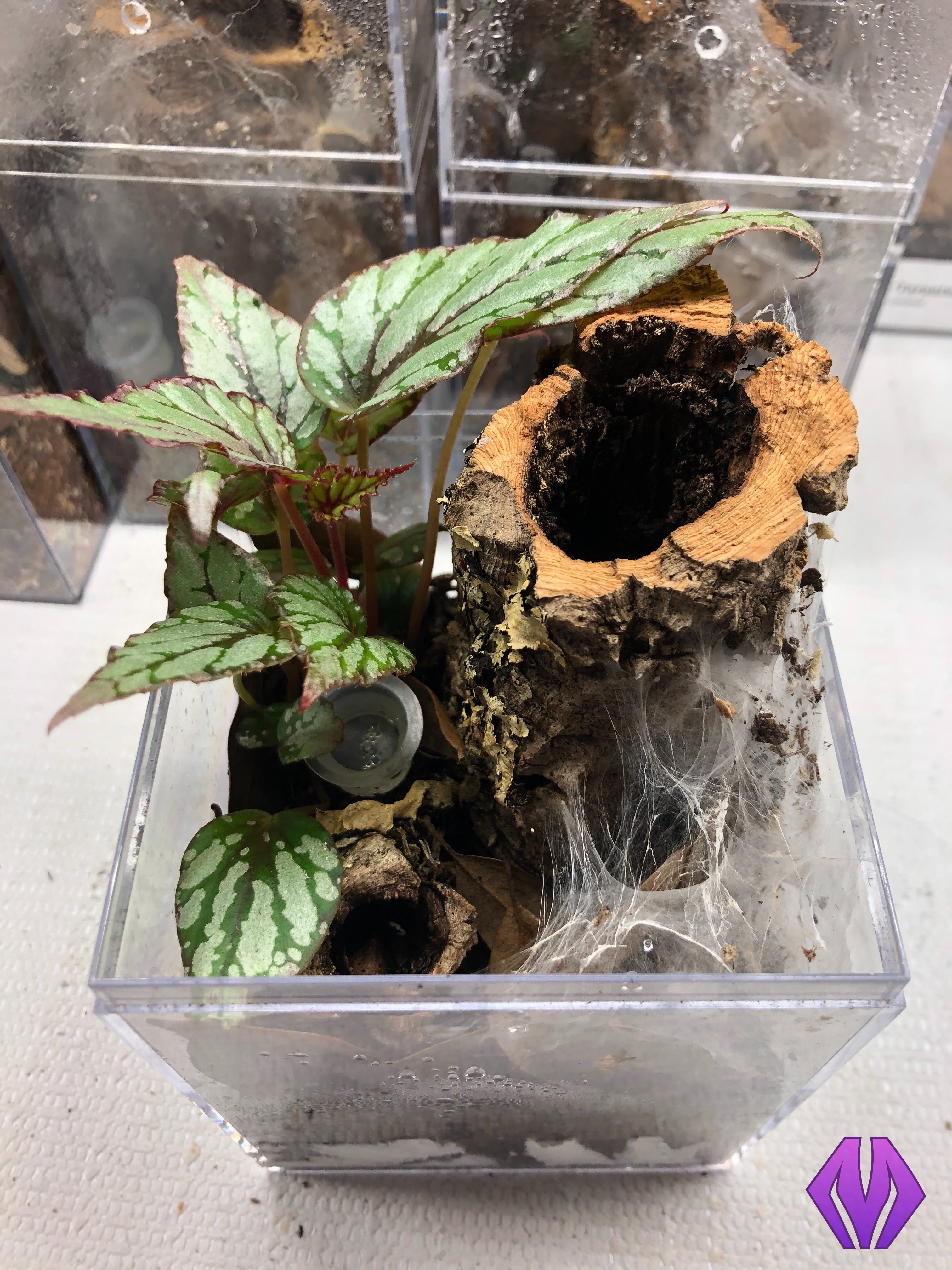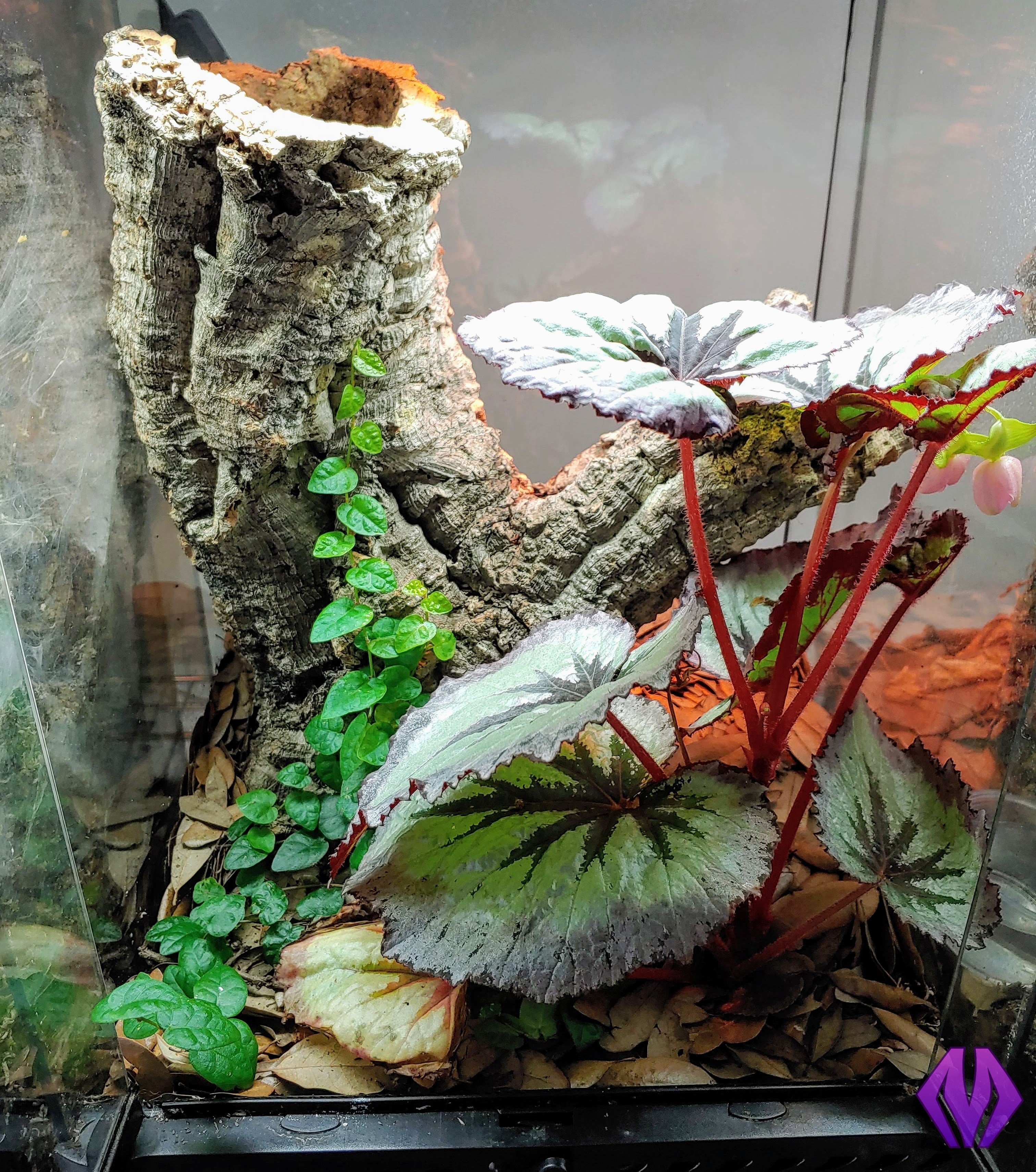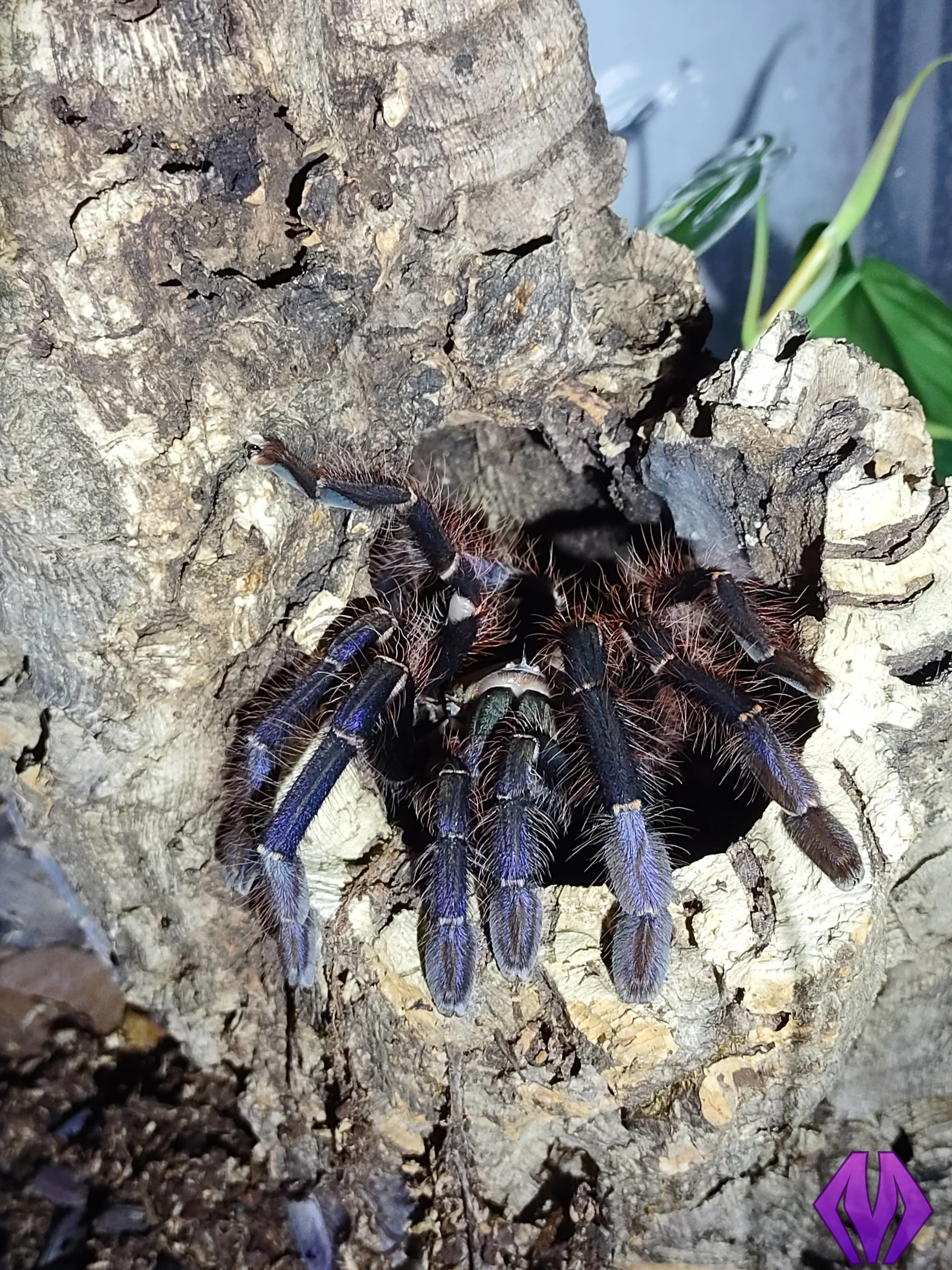Phormingochilus care guide
note: we chose to lump together all Phormingochilus species into one care guide for convenience purposes, since captive care does not differ much between the different species. Some exceptions will be included.
description
Phormingochilus is a Old World genus of arboreal tarantulas from the islands of Indonesia. With their formidable size, fast growth, and bold demeanor, they can be intimidating spiders to keepers. Each known species has beautiful striped patterning on their abdomen, which earns them the “tree tiger” or “Earth tiger” common name that they share with other Asian species. Generally they are fairly hardy and fun species to raise. As with many other Asian species, they likely have medically significant venom.
-
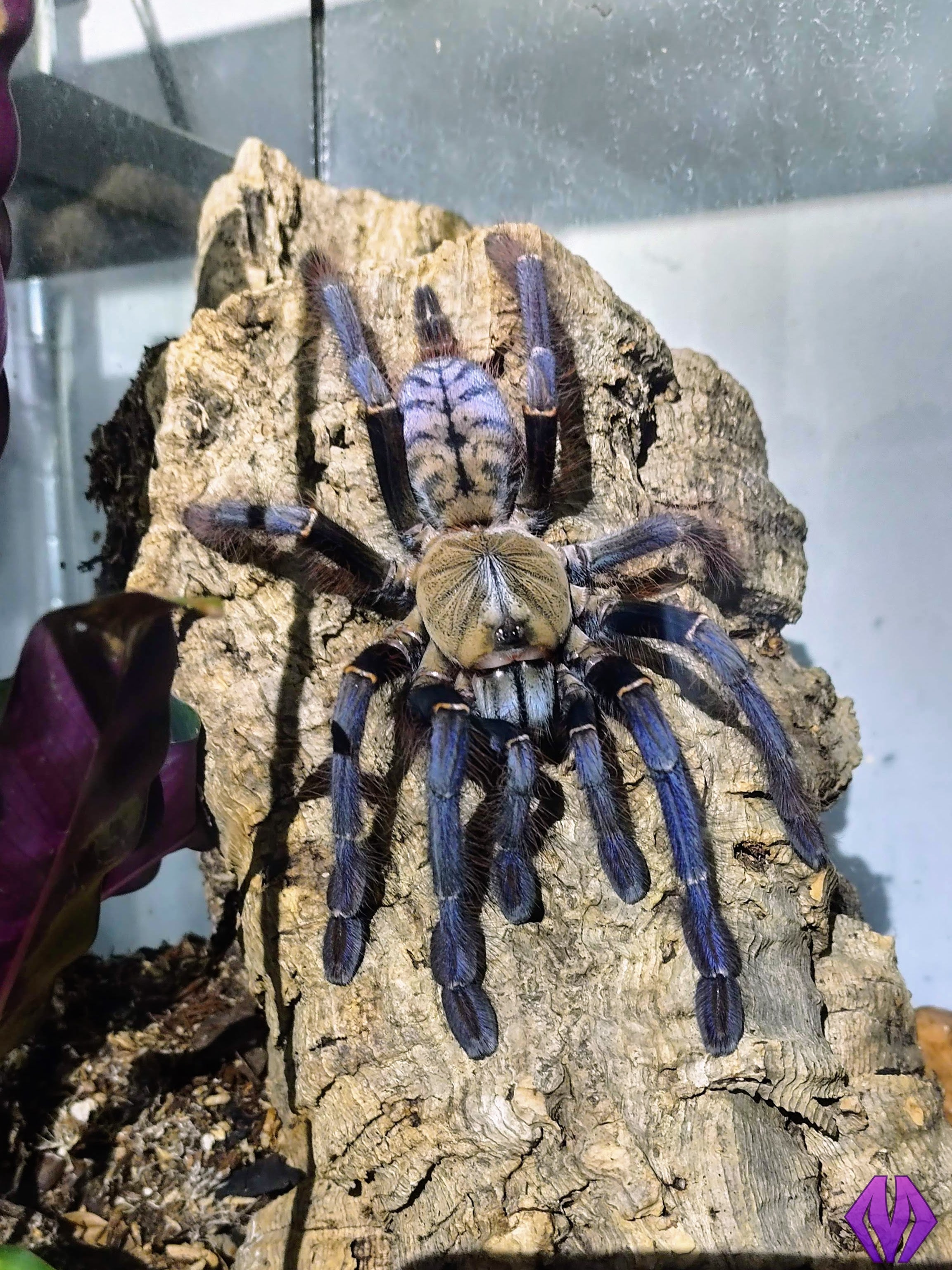
adult female P. sp. "Sabah Blue"
-

second instar spiderling - most members of the genus look drab and brown, nearly indistinguishable from each other
-

juvenile P. pennelhewlettorum
natural history
As of 2022, all Phormingochilus species are found on the Southeast Asian island of Borneo, with the exception of P. sp. “Rufus” (which is reportedly from Java and may be classified into a different genus later due to this characteristic). Borneo is characterized by thick and lush montane and lowland jungles. Phormingochilus tarantulas are mostly found in the lowland areas of Sarawak and Sabah in the north, although P. pennelhewlettorum has been found in the highland forest. This equatorial region has fairly consistent temperatures of 72-90°F and humidity from 80-90% year-round with plentiful rainfall (Geography of Sarawak). These spiders are frequently found on and in the trunks and foliage of trees.
-
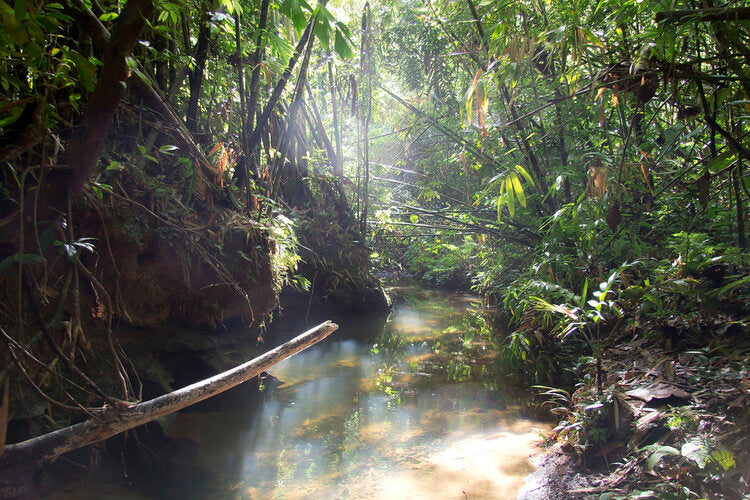
Sarawak, Borneo. "Jungle. Sarawak, Borneo. Malaysia" by LukePricePhotography is licensed under CC BY 2.0
enclosure design
Female tarantulas in the Phormingochilus genus can reach a monstrous diagonal leg span of 8” or more, with males being a bit smaller. We set up all of our Phormingochilus adults in Exo Terra brand “Mini Tall” 12” x 12” x 18” glass enclosures, which we prefer due to their built-in cross-ventilation feature, double front-opening doors, locking mechanism, and clean look. The lid might pose an issue with tarantula claws getting stuck in the mesh, so consider replacing it with drilled acrylic or Plexiglas; the more ventilation holes the better! We place a few cork bark pieces (hollow tubes are best) in a vertical position for hide options, fill the enclosure with 4-5” of megamix tropical substrate, plant a few foliage and vining plants, and provide a water dish. We set up spiderlings from 3/4”-2.5” in our arboreal spiderling enclosure similarly, and juveniles from about 2-4” are housed in Exo Terra brand “Nano Tall” 8” x 8” x 12” enclosures. Asian arboreal species in general sometimes show semi-fossorial tendencies as slings and juveniles, so yours might decide to construct a burrow instead.
maintenance
At Marshall Arachnids, we strive to take each species’ natural history into account when designing and maintaining vivaria for our spiders. We provide our Phormingochilus adults with a thermal gradient of about 75 to 85°F, with the top of the enclosure being the warmest. Each spider has the opportunity to thermoregulate by moving around the enclosure as they please. We mist daily to provide fresh water droplets to drink from and to raise ambient humidity for live plants. We add water to the substrate for live plants and clean-up crew as needed. Change the water dish every other day, or as soon as it is soiled. For adults, we tong-feed appropriately-sized live dubia roaches or crickets every 7-14 days, but not on a set schedule. For slings, we offer food approximately every 5-7 days or as-needed. Asian arboreals tend to seal their hide off with webbing before and during molting; during this time, we are hands-off and do not offer food until the spider emerges post-molt. These spiders can safely go weeks on end without food, so do not be concerned if this is the case. Just continue to mist and provide clean water regularly.
fun fact!
P. pennelhewlettorum was reportedly first discovered by researchers in 2015 being carried down from a very tall tree by a tarantula hawk wasp. There are several Phormingochilus species in the hobby that are not yet formally described to science, including “Sabah Blue”, “Akcaya”, and “Rufus”.





